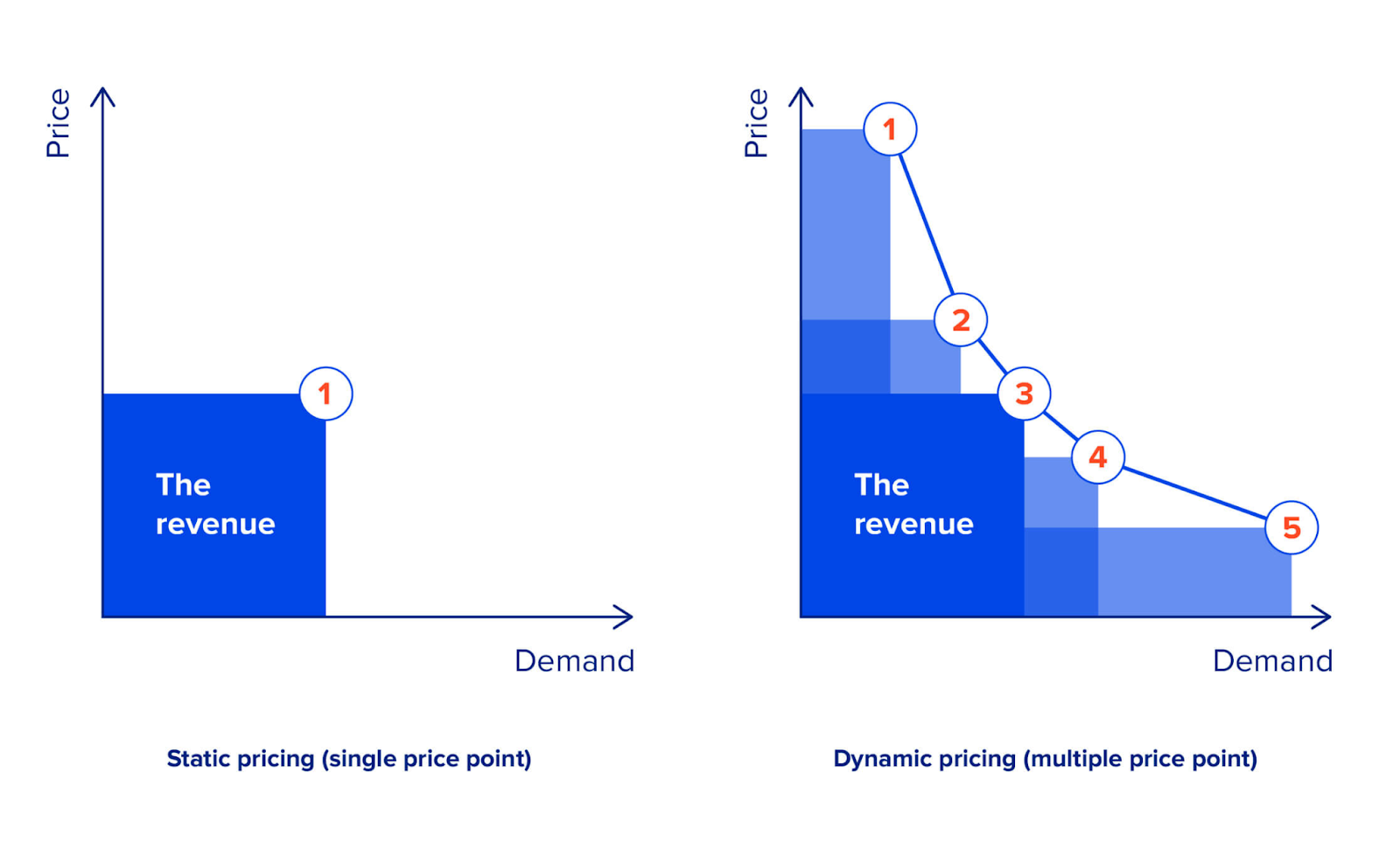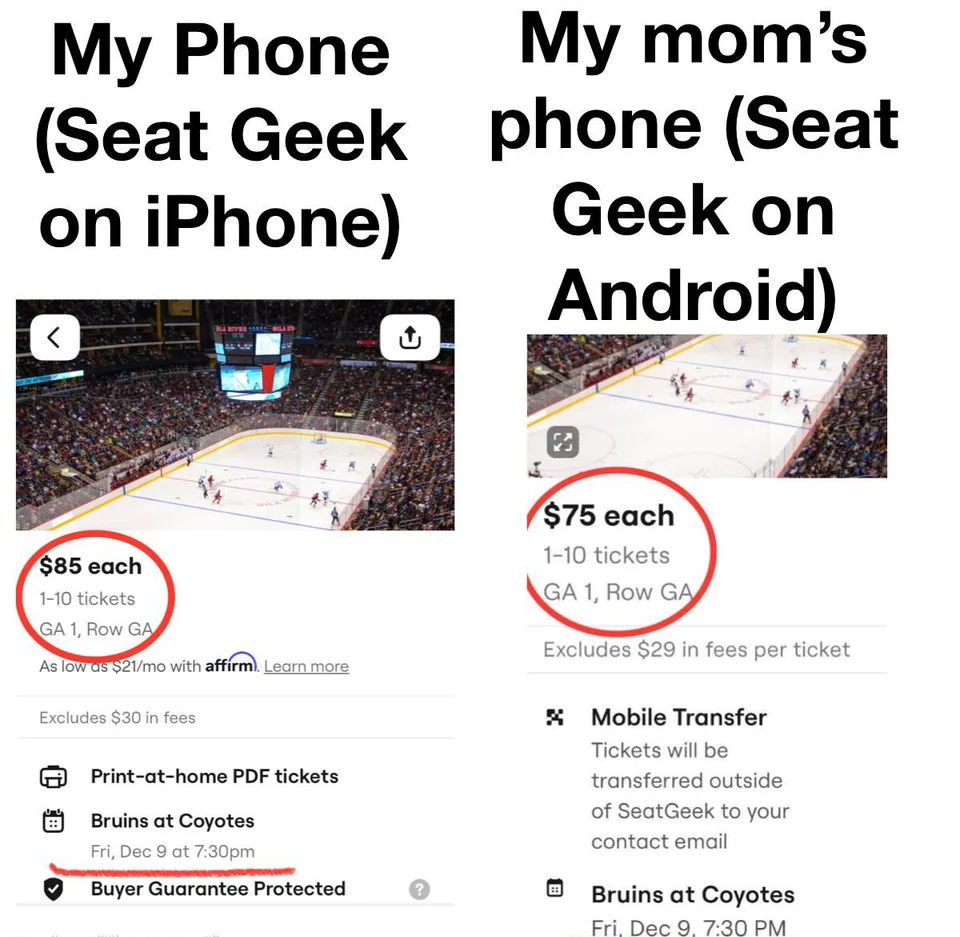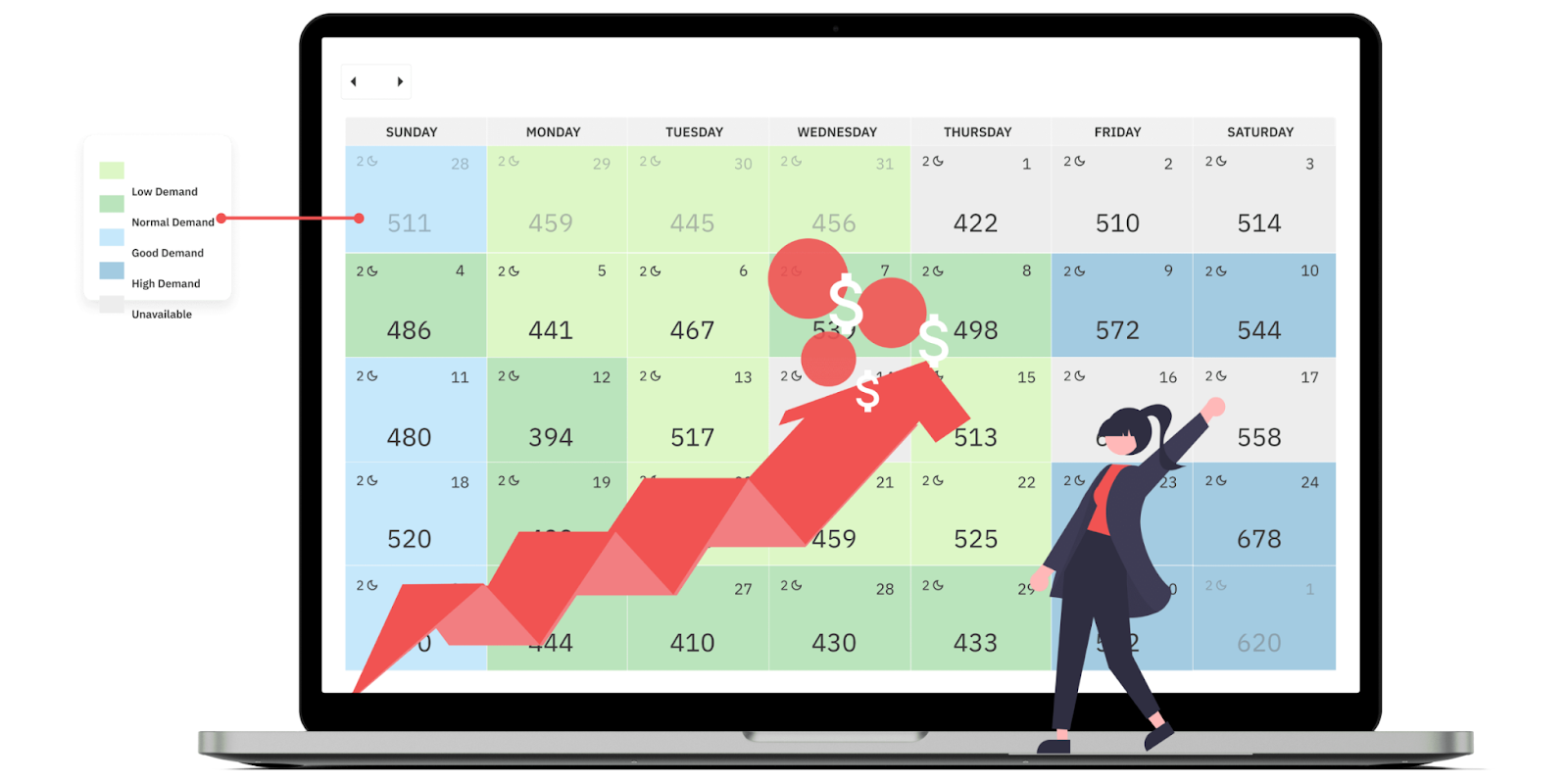We all constantly face a change in pricing for certain services. What’s going on with dynamic transformation in pricing? It would make sense that if the demand for a product or service increases, the price does exactly the same. But it isn’t always the rule in 2023, while this pricing structure has been the norm since the 1980s.
Mobupps team believes the Dynamic Pricing model will become even more popular in 2023. It just makes a lot of sense in an increasingly competitive climate, and a company’s pricing plan must be flexible enough to respond to changing customer demand and purchasing habits.
Let’s figure out what it is and how to use dynamic pricing to maximize the benefits for the company and minimize customer dissatisfaction.
Dynamic pricing is also known as snap pricing or time-based costing. Companies use this method to assess current market demands and set adaptive prices for goods and services. In some ways, it is a kind of pricing discrimination that may be traced back to the Robinson-Patman Act of 1936.
The dynamic pricing model’s fundamental concept is to offer the same product at various prices to different groups of consumers. Dynamic pricing is used in many industries, including public transit, power, retail, entertainment, leisure, and hospitality.
Consider variables such as consumer inclination to purchase at a particular time, supply and demand, rival prices, and other external market influences when determining the appropriate pricing strategy for your product or service. You will also be able to adjust the pre-set price settings as a result of dynamic pricing.

When a rise or decrease in demand is connected to a certain moment, time-based pricing happens. This method is often used by businesses to attract clients to make speedy purchase choices.
Time-based pricing examples include:

A segmented pricing model is one in which two or more prices are set for the same product. This pricing is suitable for audience segments who perceive the worth of your product differently.
Business class vs. economy class plane tickets are an excellent illustration of segmented pricing. Sports tickets are another example. Prices here are determined by the popularity of the teams competing, the players participating, the seat placements, and other factors.
Consider the following while investigating segmented pricing:

Peak pricing is frequently used by the transportation and hospitality sectors. Prices rise as demand rises during a particular month or season.
For example, if you want to stay in the Coachella Valley during music festival season, anticipate prices to rise. Another example is plane tickets. For example, around the holidays, airfare increases. During Labor Day weekend in 2022, flight prices increased by 20%.

Mobupps wants to highlight a valuable point for companies that are thinking about changing their pricing. If you decide to use dynamic pricing in your marketing strategy, then be very careful and vigilant that your strategies do not affect customer loyalty and trust. Offer discount coupons, hold promotions and sales, and explain to customers what they overpay for. These should be honest and transparent reasons that will delight and interest them.
Mobupps will continue to follow the marketing trends to share only relevant news with its partners. We invite you to cooperate with us and build your marketing strategy with any pricing type to maximize your profits and attract potential customers. Contact us with one click.
We all constantly face a change in pricing for certain services. What’s going on with dynamic transformation in pricing? It would make sense that if the demand for a product or service increases, the price does exactly the same. But it isn’t always the rule in 2023, while this pricing structure has been the norm since the 1980s.
Mobupps team believes the Dynamic Pricing model will become even more popular in 2023. It just makes a lot of sense in an increasingly competitive climate, and a company’s pricing plan must be flexible enough to respond to changing customer demand and purchasing habits.
Let’s figure out what it is and how to use dynamic pricing to maximize the benefits for the company and minimize customer dissatisfaction.
Dynamic pricing is also known as snap pricing or time-based costing. Companies use this method to assess current market demands and set adaptive prices for goods and services. In some ways, it is a kind of pricing discrimination that may be traced back to the Robinson-Patman Act of 1936.
The dynamic pricing model’s fundamental concept is to offer the same product at various prices to different groups of consumers. Dynamic pricing is used in many industries, including public transit, power, retail, entertainment, leisure, and hospitality.
Consider variables such as consumer inclination to purchase at a particular time, supply and demand, rival prices, and other external market influences when determining the appropriate pricing strategy for your product or service. You will also be able to adjust the pre-set price settings as a result of dynamic pricing.

When a rise or decrease in demand is connected to a certain moment, time-based pricing happens. This method is often used by businesses to attract clients to make speedy purchase choices.
Time-based pricing examples include:

A segmented pricing model is one in which two or more prices are set for the same product. This pricing is suitable for audience segments who perceive the worth of your product differently.
Business class vs. economy class plane tickets are an excellent illustration of segmented pricing. Sports tickets are another example. Prices here are determined by the popularity of the teams competing, the players participating, the seat placements, and other factors.
Consider the following while investigating segmented pricing:

Peak pricing is frequently used by the transportation and hospitality sectors. Prices rise as demand rises during a particular month or season.
For example, if you want to stay in the Coachella Valley during music festival season, anticipate prices to rise. Another example is plane tickets. For example, around the holidays, airfare increases. During Labor Day weekend in 2022, flight prices increased by 20%.

Mobupps wants to highlight a valuable point for companies that are thinking about changing their pricing. If you decide to use dynamic pricing in your marketing strategy, then be very careful and vigilant that your strategies do not affect customer loyalty and trust. Offer discount coupons, hold promotions and sales, and explain to customers what they overpay for. These should be honest and transparent reasons that will delight and interest them.
Mobupps will continue to follow the marketing trends to share only relevant news with its partners. We invite you to cooperate with us and build your marketing strategy with any pricing type to maximize your profits and attract potential customers. Contact us with one click.

